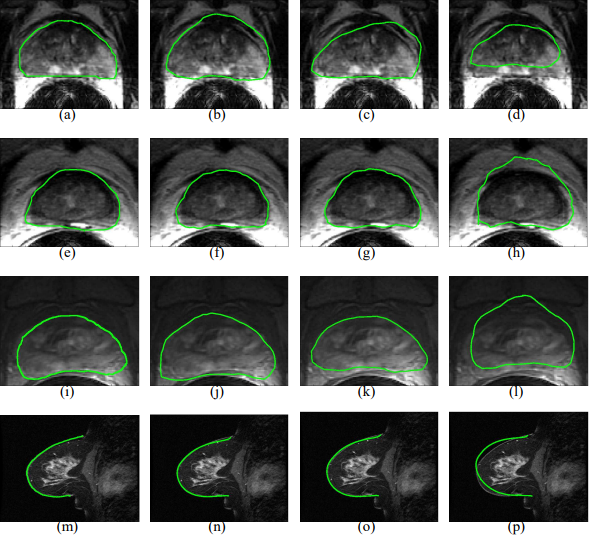Abstract
In this paper we present MANTRA (Multi-Attribute, Non-Initializing, Texture Reconstruction Based Active Shape Model) which incorporates a number of features that improve on the the popular Active Shape Model (ASM) algorithm. MANTRA has the following advantages over the traditional ASM model. (1) It does not rely on image intensity information alone, as it incorporates multiple statistical texture features for boundary detection. (2) Unlike traditional ASMs, MANTRA finds the border by maximizing a higher dimensional version of mutual information (MI) called combined MI (CMI), which is estimated from kNN entropic graphs. The use of CMI helps to overcome limitations of the Mahalanobis distance, and allows multiple texture features to be intelligently combined. (3) MANTRA does not rely on the mean pixel intensity values to find the border; instead, it reconstructs potential image patches, and the image patch with the best reconstruction based on CMI is considered the object border. Our algorithm was quantitatively evaluated against expert ground truth on almost 230 clinical images (128 1.5 Tesla (T) T2 weighted in vivo prostate magnetic resonance (MR) images, 78 dynamic contrast enhanced breast MR images, and 21 3T in vivo T1-weighted prostate MR images) via 6 different quantitative metrics. Results from the more difficult prostate segmentation task (in which a second expert only had a 0.850 mean overlap with the first expert) show that the traditional ASM method had a mean overlap of 0.668, while the MANTRA model had a mean overlap of 0.840.
Link for the publication: https://engineering.case.edu/centers/ccipd/sites/ccipd.case.edu/files/publications/Multi-attribute-Non-Initializing-Texture-Reconstruction-based-Active-Shape-Model-(MANTRA).pdf
To view or download the pdf:
Kalyanpur,A, Toth, R, Chappelow, J, Rosen, M, Pungavkar, S, Madabhushi, A. “Multi- attribute Non-initializing Texture Reconstruction based ASM (MANTRA)”. MICCAI, Vol. 1, pp. 653-661, 2008.

